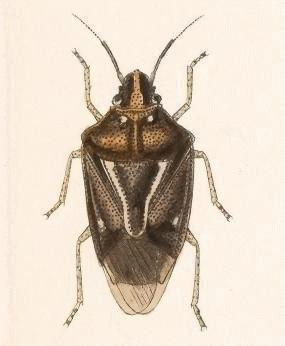|
Mormidea
''Mormidea'' is a genus of stink bugs in the family Pentatomidae Pentatomidae is a family of insects belonging to the order Hemiptera, generally called shield bugs or stink bugs. Pentatomidae is the largest family in the superfamily Pentatomoidea, and contains around 900 genera and over 4700 species.Robert .... There are about five described species in ''Mormidea''. Species These five species belong to the genus ''Mormidea'': * '' Mormidea cubrosa'' Dallas, 1851 * '' Mormidea lugens'' (Fabricius, 1775) * '' Mormidea pama'' Rolston, 1978 * '' Mormidea pictiventris'' Stål, 1862 * '' Mormidea ypsilon'' (Fabricius, 1775) References Further reading * * * * * * * * External links * Pentatomidae genera Pentatomini {{Pentatomidae-stub ... [...More Info...] [...Related Items...] OR: [Wikipedia] [Google] [Baidu] |
Mormidea Ypsilon
''Mormidea'' is a genus of stink bugs in the family Pentatomidae Pentatomidae is a family of insects belonging to the order Hemiptera, generally called shield bugs or stink bugs. Pentatomidae is the largest family in the superfamily Pentatomoidea, and contains around 900 genera and over 4700 species.Robert .... There are about five described species in ''Mormidea''. Species These five species belong to the genus ''Mormidea'': * '' Mormidea cubrosa'' Dallas, 1851 * '' Mormidea lugens'' (Fabricius, 1775) * '' Mormidea pama'' Rolston, 1978 * '' Mormidea pictiventris'' Stål, 1862 * '' Mormidea ypsilon'' (Fabricius, 1775) References Further reading * * * * * * * * External links * Pentatomidae genera Pentatomini {{Pentatomidae-stub ... [...More Info...] [...Related Items...] OR: [Wikipedia] [Google] [Baidu] |
Mormidea Lugens
''Mormidea lugens'' is a species of stink bug in the family Pentatomidae found in the Caribbean, Central America, and Eastern North America. In Illinois, adults have been observed emerging from overwintering sites in late April, and continue to be observed until early November, and appear to be bivoltine in this area. Eggs are approximately in diameter, pale yellow, and laid in small clusters of 6 to 11 eggs (mean = 9.6). Adults are bronze in color, with a white-yellow border around the scutellum, and are in length. In laboratory conditions, at approximately , development from eggs to adults has been documented to take between 39 and 50 days, and appears to be affected by the species of host plant. ''Mormidea lugens'' has been documented to feed on timothy, sedges (including '' Carex shortiana'', '' C. amphibola'', '' C. normalis''), as well as deer-tongue grass (''Panicum clandestinum''), and Bosc's panic-grass (''P. boscii''). It has been collected from pale sedge ('' C. blan ... [...More Info...] [...Related Items...] OR: [Wikipedia] [Google] [Baidu] |
Mormidea Pictiventris
''Mormidea pictiventris'' is a species of stink bug in the family Pentatomidae Pentatomidae is a family of insects belonging to the order Hemiptera, generally called shield bugs or stink bugs. Pentatomidae is the largest family in the superfamily Pentatomoidea, and contains around 900 genera and over 4700 species.Robert .... It is found in Central America, North America, and South America. References External links * Articles created by Qbugbot Insects described in 1862 Pentatomini {{Pentatomidae-stub ... [...More Info...] [...Related Items...] OR: [Wikipedia] [Google] [Baidu] |
Mormidea Cubrosa
''Mormidea cubrosa'' is a species of stink bug in the family Pentatomidae. It is found in the Caribbean Sea The Caribbean Sea ( es, Mar Caribe; french: Mer des Caraïbes; ht, Lanmè Karayib; jam, Kiaribiyan Sii; nl, Caraïbische Zee; pap, Laman Karibe) is a sea of the Atlantic Ocean in the tropics of the Western Hemisphere. It is bounded by Mexico ..., Central America, North America, and South America. References Articles created by Qbugbot Insects described in 1851 Pentatomini {{Pentatomidae-stub ... [...More Info...] [...Related Items...] OR: [Wikipedia] [Google] [Baidu] |
Mormidea Pama
''Mormidea pama'' is a species of stink bug in the family Pentatomidae. It is found in the Caribbean Sea The Caribbean Sea ( es, Mar Caribe; french: Mer des Caraïbes; ht, Lanmè Karayib; jam, Kiaribiyan Sii; nl, Caraïbische Zee; pap, Laman Karibe) is a sea of the Atlantic Ocean in the tropics of the Western Hemisphere. It is bounded by Mexico ..., Central America, North America, and South America. References Articles created by Qbugbot Insects described in 1978 Pentatomini {{Pentatomidae-stub ... [...More Info...] [...Related Items...] OR: [Wikipedia] [Google] [Baidu] |
Pentatomidae
Pentatomidae is a family of insects belonging to the order Hemiptera, generally called shield bugs or stink bugs. Pentatomidae is the largest family in the superfamily Pentatomoidea, and contains around 900 genera and over 4700 species.Robert G. Foottit, Peter H. Adler ''Insect Biodiversity: Science and Society'', John Wiley and Sons, 2009, As hemipterans, the pentatomids have Hemiptera#Mouthparts, piercing sucking mouthparts, and most are herbivore, phytophagous, including several species which are severe pests on Agriculture, agricultural crops. However, some species, particularly in the subfamily Asopinae, are predatory and may be considered beneficial. Etymology The name "Pentatomidae" is from the Greek language, Greek ''pente'' meaning "five" and ''tomos'' meaning "section", and refers to the five segments of their antennae. Pentatomids are generally called "shield bugs" in British English language , English, or "stink bugs" in American English. However, the term shield bu ... [...More Info...] [...Related Items...] OR: [Wikipedia] [Google] [Baidu] |
Pentatomidae Genera
Pentatomidae is a family of insects belonging to the order Hemiptera, generally called shield bugs or stink bugs. Pentatomidae is the largest family in the superfamily Pentatomoidea, and contains around 900 genera and over 4700 species.Robert G. Foottit, Peter H. Adler ''Insect Biodiversity: Science and Society'', John Wiley and Sons, 2009, As hemipterans, the pentatomids have piercing sucking mouthparts, and most are phytophagous, including several species which are severe pests on agricultural crops. However, some species, particularly in the subfamily Asopinae, are predatory and may be considered beneficial. Etymology The name "Pentatomidae" is from the Greek ''pente'' meaning "five" and ''tomos'' meaning "section", and refers to the five segments of their antennae. Pentatomids are generally called "shield bugs" in British English, or "stink bugs" in American English. However, the term shield bugs is also applied broadly to include several related families (e.g. Acanthosom ... [...More Info...] [...Related Items...] OR: [Wikipedia] [Google] [Baidu] |

